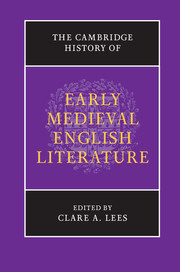Book contents
- Frontmatter
- Contents
- List of Illustrations
- List of Contributors
- Acknowledgements
- List of Abbreviations
- Introduction: literature in Britain and Ireland to 1150
- I WORD, SCRIPT AND IMAGE
- II EARLY ENGLISH LITERATURE
- III LATIN LEARNING AND THE LITERARY VERNACULARS
- 19 In measure, and number, and weight: writing science
- 20 Legal documentation and the practice of English law
- 21 Latinities, 893–1143
- 22 The authority of English, 900–1150
- 23 Crossing the language divide: Anglo-Scandinavian language and literature
- 24 European literature and eleventh-century England
- 25 Gaelic literature in Ireland and Scotland, 900–1150
- 26 Writing in Welsh to 1150: (re)creating the past, shaping the future
- Bibliography
- Index of manuscripts
- Index
26 - Writing in Welsh to 1150: (re)creating the past, shaping the future
from III - LATIN LEARNING AND THE LITERARY VERNACULARS
Published online by Cambridge University Press: 05 February 2013
- Frontmatter
- Contents
- List of Illustrations
- List of Contributors
- Acknowledgements
- List of Abbreviations
- Introduction: literature in Britain and Ireland to 1150
- I WORD, SCRIPT AND IMAGE
- II EARLY ENGLISH LITERATURE
- III LATIN LEARNING AND THE LITERARY VERNACULARS
- 19 In measure, and number, and weight: writing science
- 20 Legal documentation and the practice of English law
- 21 Latinities, 893–1143
- 22 The authority of English, 900–1150
- 23 Crossing the language divide: Anglo-Scandinavian language and literature
- 24 European literature and eleventh-century England
- 25 Gaelic literature in Ireland and Scotland, 900–1150
- 26 Writing in Welsh to 1150: (re)creating the past, shaping the future
- Bibliography
- Index of manuscripts
- Index
Summary
Arthur, Merlin, Taliesin – these are just three of the enigmatic characters that emerge out of the earliest writing in Welsh. The period up to 1150 is witness to a wide range of literary texts in the language, reflecting a dynamic and vigorous culture that existed within a multi-ethnic, multilingual environment, with one caveat, however: no literary manuscript in the Welsh language itself predates the mid-thirteenth century. Indeed, no books in Latin or the vernacular have survived from Wales before the eighth century, and from the period between the eighth and the twelfth centuries no more than twenty books or fragments have survived. These are mainly ecclesiastical and theological works such as the eighth-century Gospel book of St Chad (which was acquired in exchange for ‘a very good horse’), held at Lichfield Cathedral in England for over a thousand years but formerly at Llandeilo Fawr in Wales; patristic works, classical and Christian school texts, and pseudo-historical works such as the Historia Brittonum – the language of literacy was, in the main, Latin, not Welsh.
Traditionally, Welsh is treated as a separate language from the mid-sixth century, emerging from the Brythonic language which was spoken over almost all of Britain. Our earliest records of written Welsh are found in inscriptions, the earliest of all being the Tywyn inscribed stone of the early ninth century. The earliest Welsh in a book is the ‘Surexit’ memorandum of the same period, found in the marginalia of the St Chad Gospel mentioned above, while two poems preserved as marginal notes (added in the late ninth or early tenth century) in the Juvencus manuscript (Cambridge, University Library, Ff.4.42) are the earliest surviving poetry in the Welsh language. Another manuscript, Cambridge University Library, MS, Add. 454, dated to the late ninth or early tenth century, contains a computus fragment which discusses methods of recording the courses of the moon – this is the earliest example of a treatise in Welsh. All this suggests that Wales was indeed part of a wider European culture and was in no way isolated on the western fringes of the British Isles. But these important early sources are discussed by Ní Mhaonaigh in Chapter 4 above, so the focus here will be on extended writing – on both poetry and prose – written in the Welsh language prior to 1150. Such a challenge, clearly, is not without its problems.
- Type
- Chapter
- Information
- The Cambridge History of Early Medieval English Literature , pp. 660 - 686Publisher: Cambridge University PressPrint publication year: 2012

